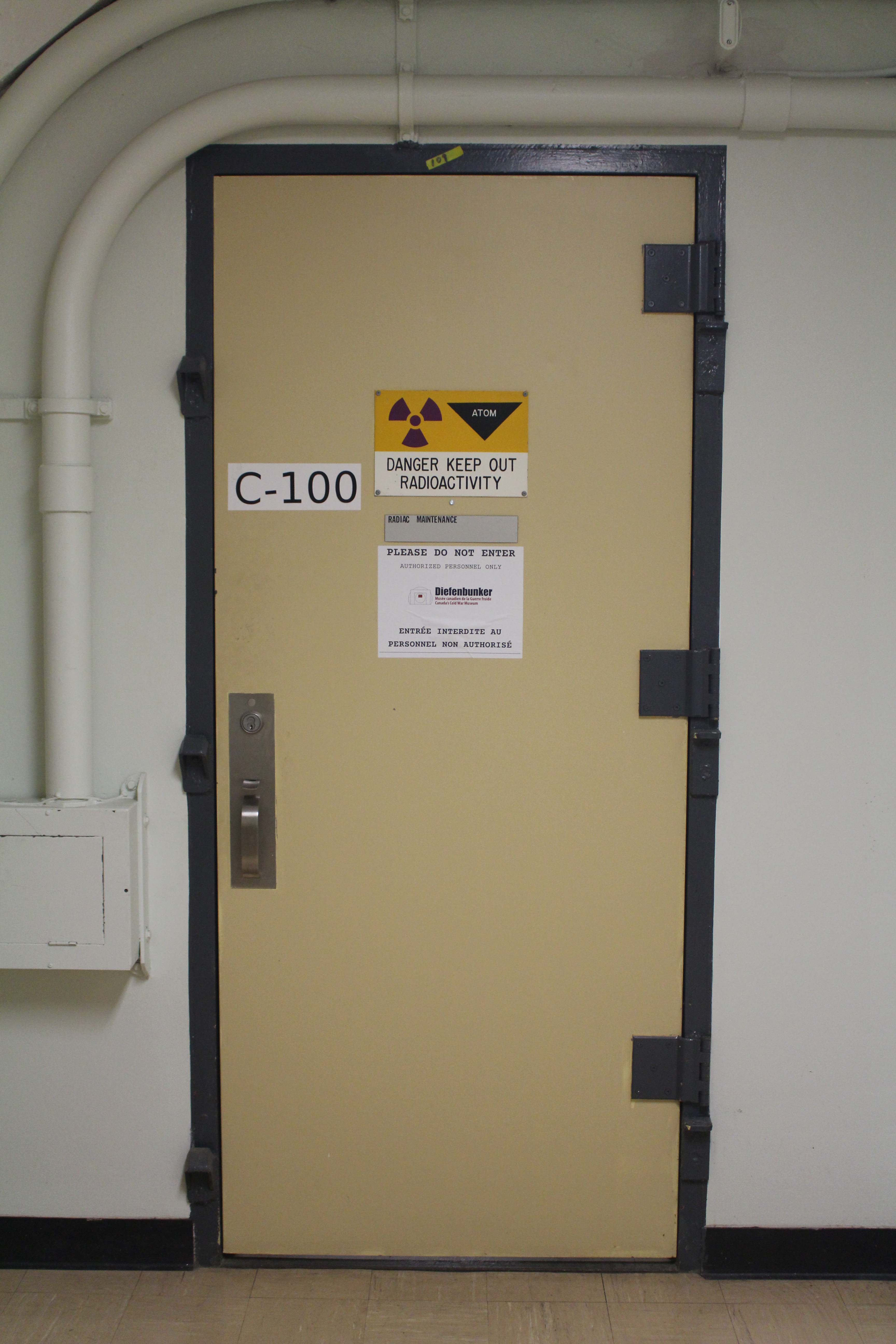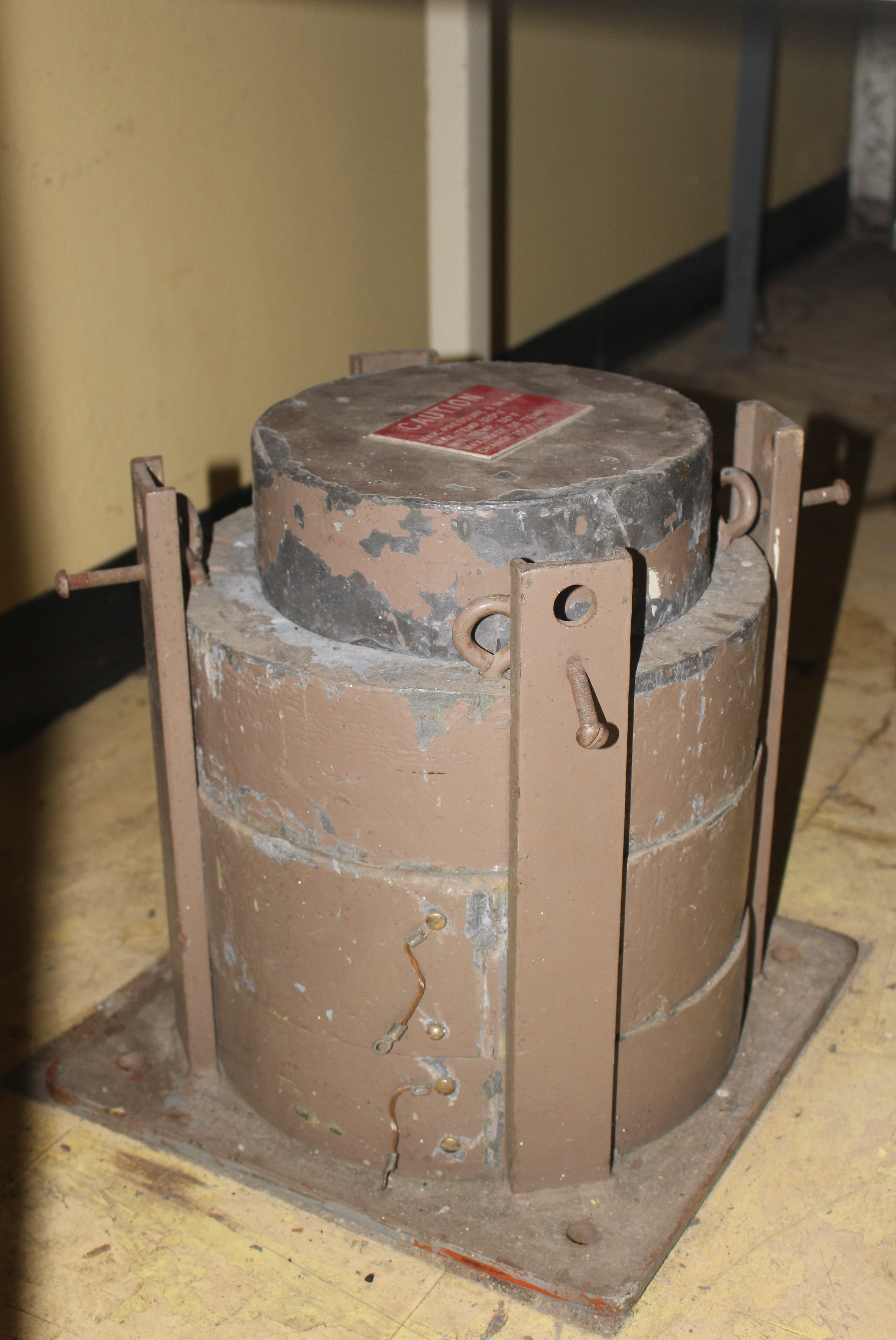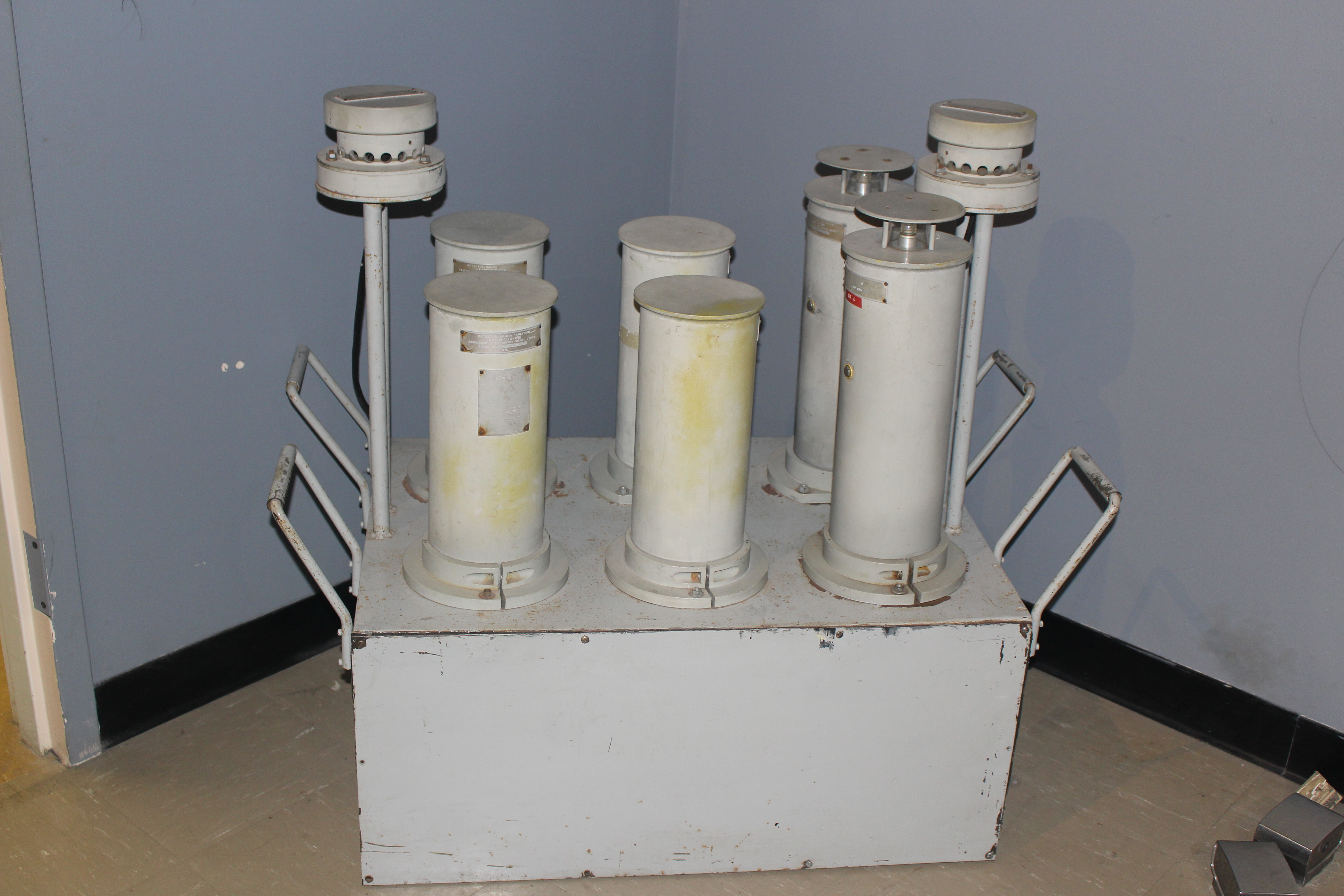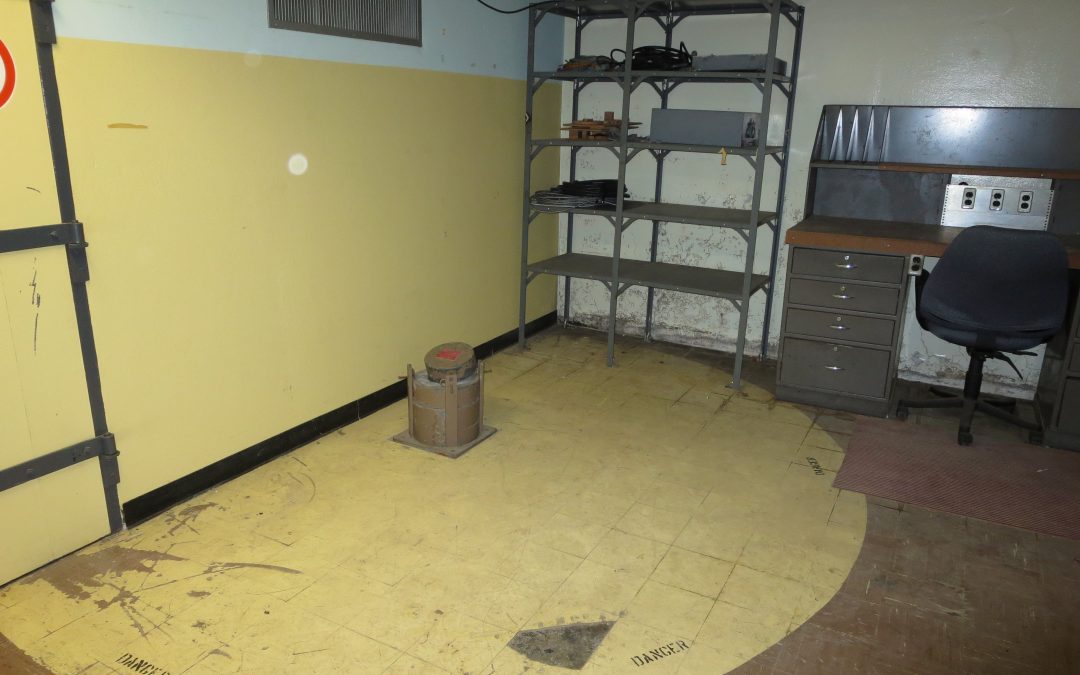Our Artifact of the Month for July is a little on the dangerous side. Pleased ensure that you are behind the yellow line at all times. This is going to get radioactive!
 Welcome to Radiac, a small room located on the 100 Level (bottom floor) of the museum. This room served an essential role in radiation detection for the Bunker. This was the room where radiation detectors were tested and tuned to make sure in the event of an attack, this place would be ready. Let’s start with the layout of the room. Radiac lies on the other side of a door labelled radioactive. It’s a smaller room with original desks and shelves. The main focal point of the room is a large yellow circle painted on the ground labeled “danger” and has a pedestal in the centre. This pedestal would have had a large lead lid which would be raised to expose Cesium-137. Cesium-137 is a radioactive isotope and it would have been used to tune the Rad Sniffers.
Welcome to Radiac, a small room located on the 100 Level (bottom floor) of the museum. This room served an essential role in radiation detection for the Bunker. This was the room where radiation detectors were tested and tuned to make sure in the event of an attack, this place would be ready. Let’s start with the layout of the room. Radiac lies on the other side of a door labelled radioactive. It’s a smaller room with original desks and shelves. The main focal point of the room is a large yellow circle painted on the ground labeled “danger” and has a pedestal in the centre. This pedestal would have had a large lead lid which would be raised to expose Cesium-137. Cesium-137 is a radioactive isotope and it would have been used to tune the Rad Sniffers.

Cesium-137 pedestal
A rad sniffer is a radiation detector. Its purpose was to detect radiation and cause an internal shut down of the building. For example, take a look at the photo to the (R/L). This is a portable rad sniffer which we have on display in our model room. It consists of 8 stacks, with each one serving a different purpose. There are two stacks that are flash sensitive, 2 that detect gamma rays, 2 that detect neutron particles, and 2 that are sensitive to pressure changes. The stacks worked in pairs in order to more accurately detect changes. For instance, if one of the gamma ray stacks detected gamma rays, it would check the other gamma ray stack to see if it had detected the same thing. If all or a combination of the stacks detected something it meant that the Bunker needed to go into lock down mode and start closing air valves within the machine room. The Bunker would then go into lockdown for 30 days. The first 3 days would use recycled air, giving the radiation enough time to subside. Then, the air valves would be reopened and start sending air through our quadruple filtration system.

Portable Rad Sniffer, on display in our Model Room
Detector tuning involved getting the devices close to the source of radiation without exposing a person to the radiation itself. According to a story told to our Collections Manager and long-time volunteer, Doug Beaton, operators in the room would place the detectors on rolling carts and push them towards the source, making sure they stayed behind the yellow radiation line. They then took a long pole with a mirror on the end and placed it close to the dial so they could read it.
Although no longer for its intended purpose, Radiac is now a part of our Museum’s collections areas where we store and preserve our collection of larger artifacts. You can however, see our portable rad sniffer on display in the Model Room. Check it out at your next visit!
